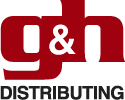
Erratic Tariffs & Small Business
In today’s global economy, distributors act as the critical link between manufacturers and customers. They manage logistics, inventory, and market fluctuations — all while maintaining competitive pricing and consistent supply. But when governments impose erratic or unpredictable tariffs, these businesses are often the first to feel the impact. The ripple effect reaches far beyond warehouses and delivery routes, ultimately affecting every customer and industry they serve.
The Problem: Tariff Whiplash
In today’s industry most people understand what Tariffs are and why they are used as negotiation tactics with our foreign parts. While tariffs may be intended to protect domestic industries, erratic or frequently changing tariffs can create a volatile business environment. For distribution companies that rely on stable supply chains and pricing models, sudden tariff changes throw a wrench into everything from purchasing decisions to customer contracts.
Here’s how erratic tariffs can disrupt local distributors:
Unpredictable Costs: When tariffs increase suddenly, the landed cost of goods can spike overnight. Distributors are left scrambling to absorb those costs or pass them on to customers — both of which erode trust and margins.
Inventory Planning Chaos: Long-term inventory planning becomes a gamble. If tariffs shift between order and delivery, products may arrive with unexpected fees, leading to budget overruns or even financial losses.
Customer Relationship Strain: Distributors often work on tight delivery timelines and pricing agreements. When tariffs force price changes mid-contract or delay shipments, customers may see the distributor as unreliable — even when the root cause is outside their control.
The Real-World Impact
For small- to mid-sized distributors, especially those serving industrial or agricultural sectors, erratic tariffs can be devastating. Many operate with limited cash flow and depend on predictable pricing to service recurring accounts. An unexpected 10–25% hike in product cost can mean the difference between a profitable month and one in the red.
And for the customers — whether that is a contractor ordering tools, a farmer buying hose assemblies, or a pressure washer needing parts — those cost spikes get passed down the line, affecting project budgets, maintenance schedules, and ultimately, the bottom line.
What Can Be Done
While individual businesses cannot control government trade policies, there are several proactive steps that can help both distributors and their customers weather the uncertainty:
1. Transparent Communication
Distributors should keep customers informed when tariff changes might affect product availability or pricing. A quick heads-up goes a long way in maintaining trust.
2. Diversified Sourcing
Where possible, distributors can work with multiple suppliers — ideally from different countries or regions — to reduce dependence on goods vulnerable to tariff swings.
3. Flexible Pricing Models
Including tariff clauses in quotes and contracts allows for fair adjustments if external costs change. This approach keeps both parties protected and prepared.
Final Thoughts
Erratic tariffs do not just shake up spreadsheets — they challenge the very structure of distribution. By staying transparent, flexible, and engaged, distributors can protect themselves and their customers.
